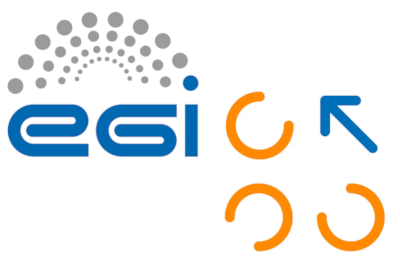Introduction
The IM is currently being used in production in different areas. In the last decade it has been chosen as one of the orchestrator components to deploy applications in several european projects: INDIGO DataCloud, EOSC-Hub, EOSC-Synergy, EGI-ACE, ...
In the last years the most prominent ones are:
AI-SPRINT
AI-SPRINT defines a novel framework for the design and operation of AI applications in computing continua.
AI-SPRINT enables the seamless design and partition of AI applications among the plethora of cloud-based solutions
and AI-based sensor devices, providing security and privacy guarantees.
The IM is used, as part of the runtime environment (see deliverable D3.1),
for the deployment of the virtualized infrastructure required for executing AI models along the computing continuum:
Kubernetes clusters, InfluxDB,
OSCAR clusters, etc.


DT-GEO
DT-GEO is a European research project focused on changing the way we understand, predict, and respond to geohazards.
Using digital twin technology and exascale computing, we develop cutting-edge tools to model Earth’s most dynamic systems,
helping communities and decision-makers take informed and decisive action.
In this project the IM is used as part of the "Workow deployment and execution" task (see deliverable D2.2),
furthermore it is also used to deploy customized SLURM-based clusters that are used for scientists to train the computing skills required before executing on a
supercomputer (e.g. Marenostrum)
interTwin
interTwin co-designs and implements the prototype of an interdisciplinary Digital Twin Engine (DTE). Its functional specifications
and implementation are based on a co-designed interoperability framework and conceptual model of a DT for research.
The ambition of interTwin is to create consensus on a common approach to the implementation of DTs that is applicable across
the whole spectrum of scientific disciplines that will facilitate developments and interoperability across different DTs.
The IM is part of the DTE Core modules used for
the deployment of the virtualized infrastructure required for performing real-time data ingestion and deploy the engines required for Digital Twins
(see Deliverable D6.1): Kafka, AirFlow, MLFlow, yProv, Horovod, Galaxy, etc.


AI4EOSC
The vision of the AI4EOSC project is to increase the service offer in the EU landscape by expanding the European Open Science Cloud (EOSC)
ecosystem to support the effective utilization of state-of-the-art AI techniques by the research community . In this regard, the project
will provide highly innovative services built on top of existing EOSC services, thus allowing EU researchers to efficiently exploit large
and distributed datasets, following a service-oriented approach over the EOSC continuum.
IM is selected for the deployment of pre-trained AI models from the AI4EOSC Marketplace
in multiple Cloud platforms in a consistent and reproducible manner.
EGI
EGI is a federation of computing and storage resource providers united by a mission to support research and development.
The federated e-infrastructure comprises national and intergovernmental computing and data centres from the EGI Federation.
These federated centres make EGI one of the largest distributed computing infrastructures for research.
The IM has been selected as the orchestrator component in EGI to deploy VMs
in the EGI Cloud Compute platform.
Get more information at the IM Service entry.


EOSC-Beyond
The ambition of EOSC Beyond is to support the growth of the European Open Science Cloud (EOSC) in terms of integrated
providers and active users by providing new EOSC Core technical solutions that allow developers of scientific application
environments to easily compose a diverse portfolio of EOSC Resources, offering them as integrated capabilities to researchers.
The IM is the Deployment Service of the Execution Framework,
a new EOSC Core Service. It will enable the automated staging of open datasets on dynamically provisioned virtualized infrastructure
to facilitate the creation of Virtual Research Environments.